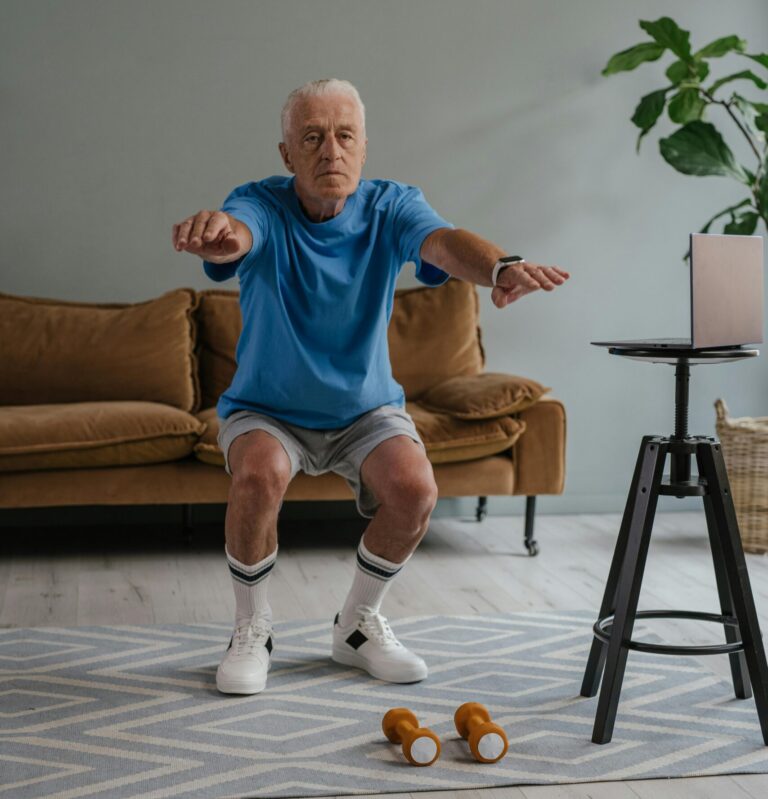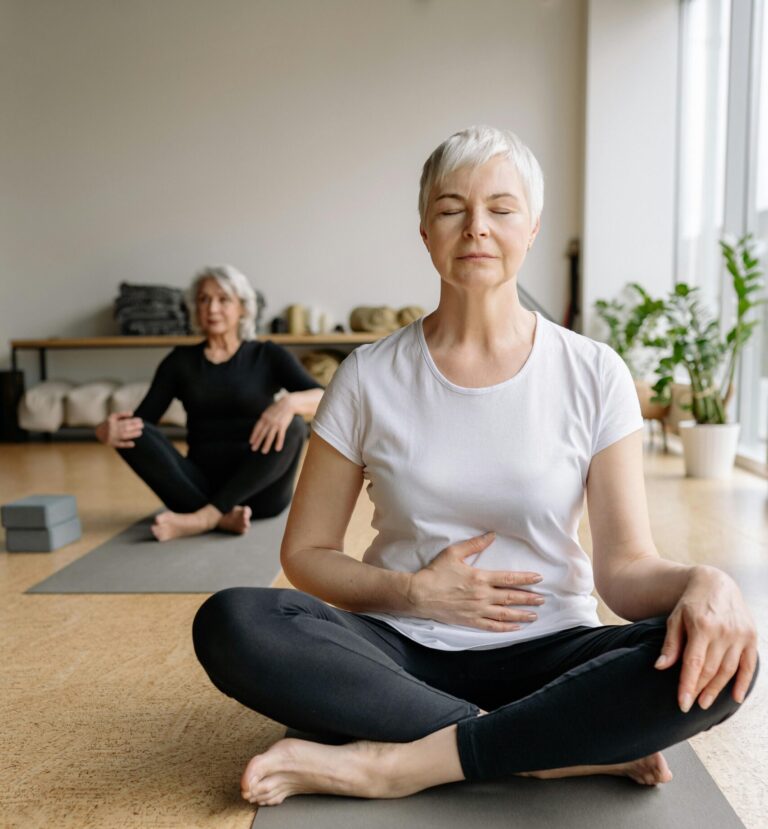How Stretching Prevents Injury and Boosts Performance Naturally

How Stretching Can Help Seniors Prevent Injury
Maintaining your independence starts with taking care of your body—and stretching might just be the easiest first step you can take.
As we age, muscle stiffness, joint pain, and limited mobility can sneak up on us. But here’s the good news: stretching can play a big role in keeping your body flexible, mobile, and injury-free.
Whether you’re walking your dog, playing with the grandkids, gardening, or simply reaching for something on the top shelf, stretching helps make everyday tasks feel easier and safer.
Why Do Seniors Need to Stretch?
As we get older, muscles naturally lose some of their elasticity. Joints become stiffer. Even things that used to feel simple—like bending down or standing up—can suddenly feel harder. Without regular movement, the body’s muscles and connective tissues tighten, which increases the risk of injuries.
Stretching is like giving your muscles a gentle wake-up call. By doing it regularly, you’re helping your body stay supple and strong enough to handle day-to-day activities.
Let’s break it down. Stretching helps:
- Improve flexibility and range of motion
- Reduce muscle tension and stiffness
- Prevent common injuries like falls, strains, and sprains
- Enhance balance and mobility
- Promote better posture
Real Example: Meet Carol
Carol, a 72-year-old member of our At Home Fitness community, joined our online fitness program last year. When she started, she struggled with tight hips and lower back pain. “I couldn’t walk for more than 10 minutes without needing to sit down,” she said.
We introduced Carol to gentle daily stretching routines. After just a few weeks, she noticed a change. “Stretching gave me back my freedom. I can move more easily and even help my daughter chase the kids around!”
Her story might sound familiar—and it’s one of many. The truth is, mobility improves when you give your body the care it deserves.
How Stretching Prevents Injury in Older Adults
Think of your muscles and joints like rubber bands. When you stretch them regularly, they stay flexible and strong. If you let them sit in a drawer too long? They get brittle and break easily.
That’s how injuries happen—you make a quick movement that your muscles aren’t ready for, and suddenly you’re dealing with a pulled muscle or worse.
Some common senior injuries that stretching can help prevent include:
- Muscle strains: Often caused by sudden movements during daily tasks.
- Joint issues: Stiff joints limit movement, increasing fall risk.
- Falls: Poor balance and flexibility can lead you to trip or lose control.
But here’s the best part: you don’t have to spend an hour stretching to see benefits. Even 10 minutes a day can make a noticeable difference.
Types of Stretching That Are Safe and Effective for Seniors
Now you might be wondering, “Okay, which kind of stretching is best for me?” Don’t worry—we’ve got your back. Not all stretching is created equal, and for seniors, it’s essential to keep it gentle, slow, and controlled.
Here are some examples of stretching methods we recommend:
1. Static Stretching
This involves holding a stretch for 15–30 seconds. It’s perfect after your walk or exercise routine. For instance, stretch your hamstrings by sitting in a chair, extending one leg, and reaching toward your toes gently. No bouncing—just breathe and hold.
2. Dynamic Stretching
This is movement-based stretching—think of slow, sweeping arm circles or leg swings. We often use this as part of our warm-up in sessions on AtHomeFitness.health.
3. Chair Stretches
Not comfortable standing? No problem! Many stretches can be done while sitting. These are especially helpful if you’re managing joint pain or balance issues.
Tips to Get Started with a Stretching Routine
Starting something new always feels a little scary. But here’s the encouraging part: you can begin stretching today, no equipment needed. Just follow these tips to keep it simple and safe:
- Warm up first: Walk in place or do arm circles to get blood flowing.
- Start small: 5–10 minutes a day is enough when you’re starting out.
- Listen to your body: If it hurts, stop. Stretching should never be painful.
- Breathe deeply: Don’t hold your breath—oxygen helps your muscles relax.
- Be consistent: Making it a daily habit delivers the best results.
Need help getting started? We offer **guided stretching sessions** specifically designed for seniors inside our online fitness program. You can do them right from your living room!
Curious About the Science?
If you’re interested in the science behind stretching, we’ve found some great studies and resources worth checking out:
- National Institutes of Health – Stretching and Flexibility Research
- CDC Physical Activity Guidelines for Older Adults
- Mayo Clinic – Stretching Exercises Guide
Final Thoughts: Stay Safe, Stay Active
Stretching may not seem like a big deal, but the truth is—it’s one of the simplest, safest, and most effective ways to protect your body as you age. Whether you’re jogging for fun or just want to get through your day without pain, daily stretching helps you stay independent and injury-free.
And remember, at At Home Fitness, we’re here to support you every step of the way. Our programs are designed with seniors in mind—no jumping, no stress, just safe, effective movements that meet you where you are.
So why not give your muscles a little love today? Start gently, stay consistent, and notice how much better you’ll feel—one stretch at a time.
Ready to take the next step in your fitness journey? Join our community and discover just how good stretching (and moving) can feel!



